The rear flooring
The floor of the fighting compartment was in three main parts; the rotating turret floor, a fixed surface ahead of that, and another behind. The rear surface comprised three removable panels.
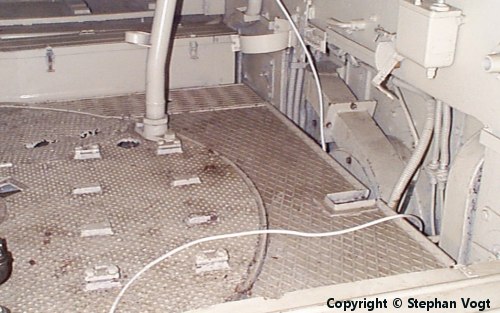
This is the preserved Tiger "712" before restoration began. Its interior was unfortunately painted white postwar, and many items are missing, but the floor panels remain. The turret floor is on our left and these panels are behind it, adjacent to the firewall.
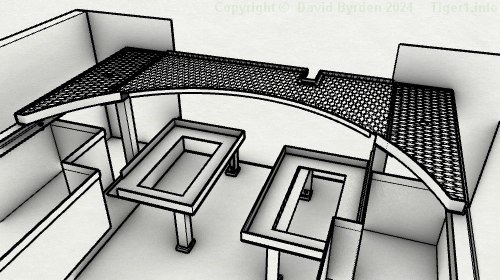
This simplified model of the hull demonstrates how the rear flooring sits above the battery trays, and does not cover the large storage boxes. The surface of the flooring is about 525mm above the surface of the hull.
Frames
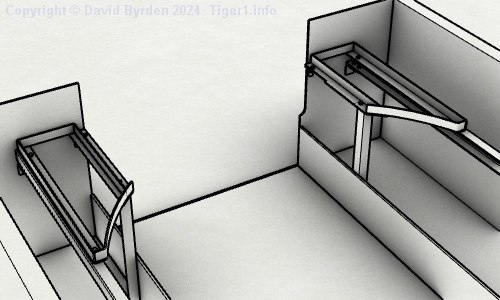
The rear panels sit upon two skeleton frames.
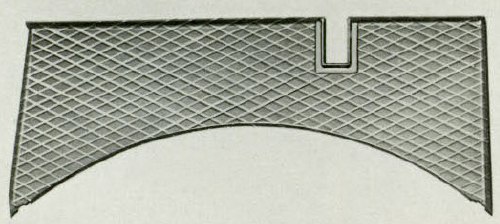
The central panel was the only one to have a raised lip, on its rear side. It had a notch allowing a vertical control rod to pass.
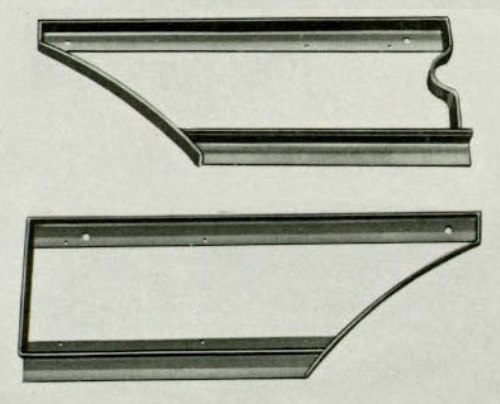
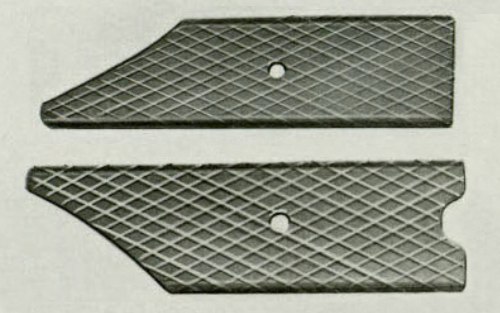
These images of the frames and the small panels are from a manual [4, see Tafel 5] . They show a notch in the right-hand panel where the bilge pump drain pipe can pass. But I have not seen this notch in any surviving Tiger or in any other document. The pipe, in all cases, makes a detour around this panel. Since the detour is an improvement, simplifying the manufacture of this frame, I assume that the notched version was the earlier version and it existed only in the first few Tigers, if any.
Another oddity is that the left-hand frame, in all three preserved examples, is slightly longer than the right, by as much as 20mm. There is no obvious design reason for this.

The frames were made of L-girders and flat strips welded together. This is a cross-section through one.
Supports
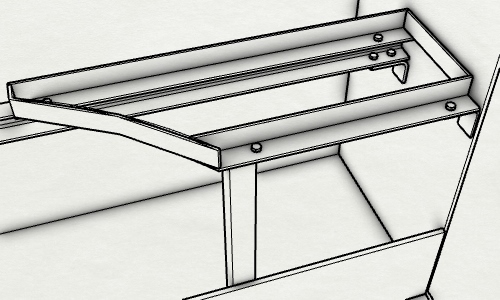
Each frame was attached by four bolts to supports. Their outer edge sat upon one of the main U-beams. The inner edge of each frame was supported by a tab on the firewall and a vertical L-beam welded to a floor stiffener. There was a gap between flooring and firewall, nominally 5mm.
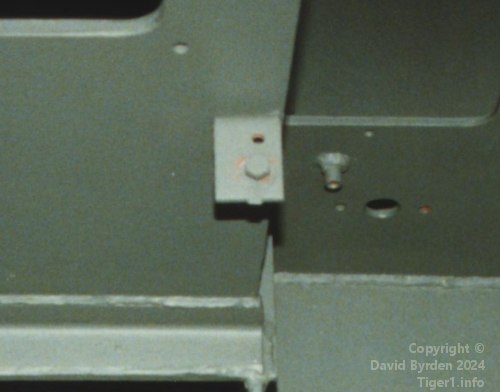
There was some variation in the dimensions of tanks, caused by the manufacturing process. The bolt holes in these supports were therefore drilled at the final stage, to position the flooring frames correctly, with exactly a 1000mm gap for the large panel.
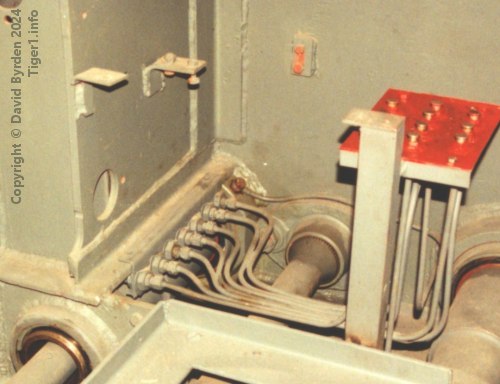
In this photo of the restored Tiger "131", we are seeing the rear left corner of the fighting compartment, with the flooring removed. The lubrication system and torsion bars are under it, but there is a lot of space above them.
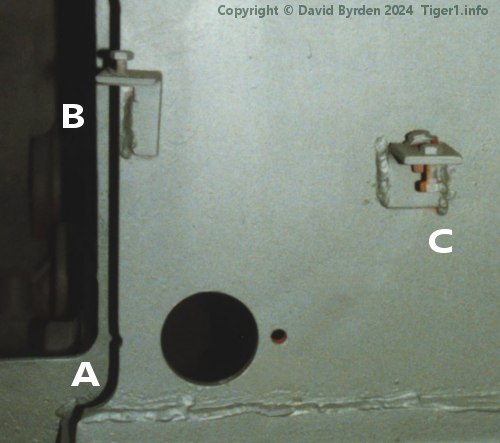
On this side we find a "fix" made by either the designers or the factory workers. At some point during development of this chassis (maybe when it was still called VK 3601) the opening in the firewall was expanded by 25mm on the left side. The change is visible at [A]. This eliminated some of the wall behind the frame support at [B], so it was partially cut away and was twisted inwards.
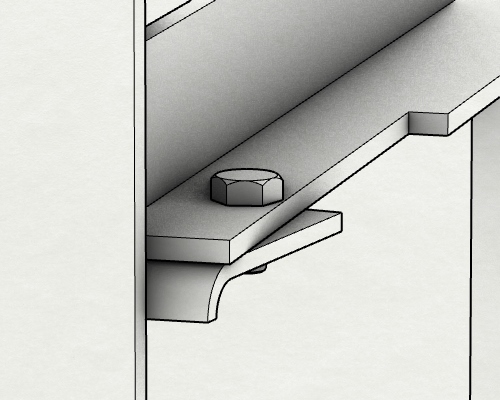
A section of the left-hand frame was cut away too, as we can see in this view from behind. As evidenced by the Saumur museum Tiger, this "fix" was never corrected. [1]
Storage boxes
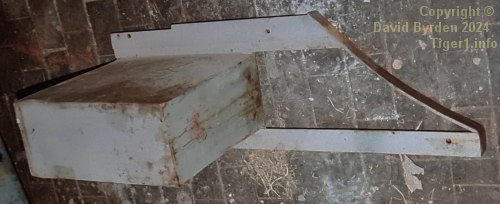
The space below the rear corner panels was used for storage. An open-topped box was attached to each frame; this is the left-hand one, which has 12.7 liter capacity.
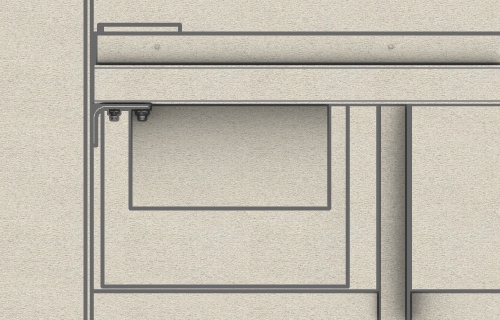
The right-hand box was only 6.6 liters, reinforcing my suspicion that it used to share space with the bilge pump pipe. This view from the right captures the relative sizes of the two boxes.
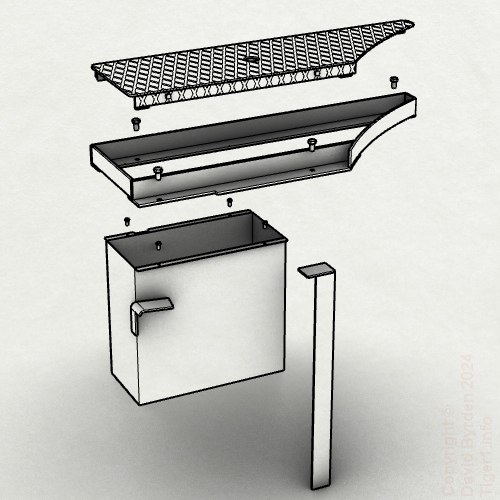
These are the parts of a complete corner floor segment.
Versions
At some time in 1943, the left-hand storage box was deleted because the tank's fuel filter was moved into that corner. A German drawing dated 4 May 1943 shows how to place the filter there, and a photograph confirms that this change happened before the tank's submersion ability was deleted [5] . An extant parts list for the Tiger chassis has this box removed from the list of parts but still visible in the illustrations. [4, see Tafel 5]
[1] Photographic study of the Saumur Tiger by "Panzerbasics"
[2] Survey of Tiger 250031, by Stephan Vogt
[3] Survey of Tiger 250122, at Bovington museum, by David Byrden
[4] Kraftfahrgerät teil 3, Fahrgestell und Turm Panzerkampfwagen "Tiger", heft 60
[5] Der Panzerkampfwagen VI und seine abarten, Walter J. Spielberger, Motor Buch Verlag